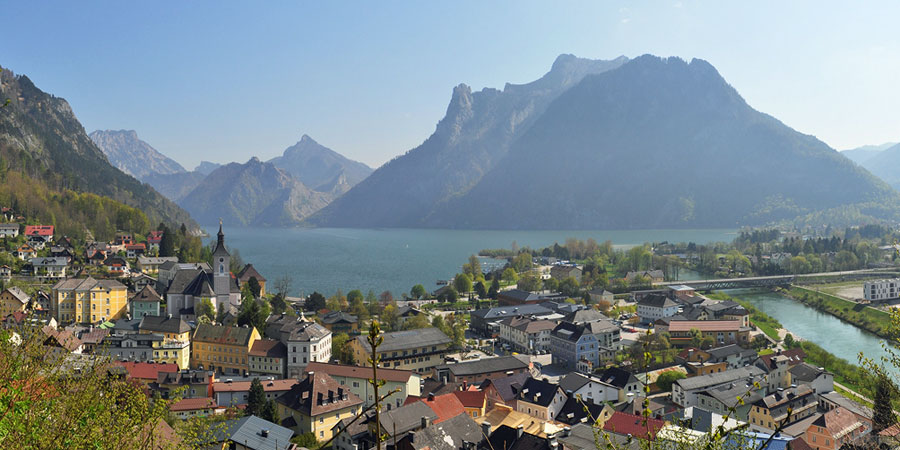Austria's compact nature does nothing to dull its charm. The land of the imperial Hapsburgs, Mozart and the Sound of Music delivers history, culture and scenery on an almost unparalleled scale. Away from the splendour and clamour of Vienna and Salzburg is the Austrian Lake District or 'Salzkammergut'. Here the storybook façade of Austria reaches the same heights as the mountains of its Alps. Turquoise, empyreal lakes are cradled on the shoulders of green monoliths with pretty towns nestled in between the shores and constantly elevating topography. The Salzkammergut is today synonymous with serenity and relaxation, the lakes and their scenic backdrops prove focal points for tourists and holiday-goers, with outdoor sports and activities favoured. This particularly photogenic region of Austria includes the UNESCO listed town of Hallstatt and stretches from the borders of Salzburg to the mighty peaks of the Dachstein Mountains.
The movie poster for 'The Sound of Music' was a fantastic advert for Austria's scenery, the green meadow and imperious mountains rising out past Julie Andrews became strongly attached to Austria's perceived identity. Although the background in the image is accurate, the limited depths of a Hollywood poster do not do The Salzkammergut scenery justice. An excellent microcosm of the region's charm can be better seen through St Wolfgang, an Austrian market town on the banks of Wolfgansee. St Wolfgang's whitewashed, slate-topped houses provide a striking contrast to the dark green hues of the surrounding mountains and the profound turquoise of Wolfgangsee's serene waters. The surrounding hills serve as an adventure playground for anyone so inclined to hiking and photography. Certainly this town serves as a pilgrimage point for hikers and tourists alike, however, it is also home to another type of pilgrimage entirely. The church here was founded by St Wolfgang, and after his canonization in 1052 his church became a prominent pilgrimage site.
If St Wolfgang is a great example of the beauty of the Austrian Lakes then Hallstatt is nigh on perfection. Hallstatt is the image you'd see before the first chapter of an Austrian storybook. The town is compact and almost untouched by the rigours of time. You can walk from one side of Hallstatt to the other in around 10 minutes. That's not where you'll want to spend most of your time here though. Without a doubt visiting its lake and looking out across the timeless waters of Hallstätter See, to view the unbroken reflection of the town and its surrounding environs is the best way to experience it, through nature's mirrors. The spellbinding town-scape of Hallstatt is coveted all over the world, so much so in fact - that a Chinese mining company built a full-scale replica of the town in Huizhou. Hallstatt was once a burgeoning centre of the local salt trade, and because of its unique location, until the 19th century it was only possible to reach the town by boat, it has remained virtually unchanged since. Today Hallstatt is a UNESCO World Heritage site.
Without a doubt the Salzkammergut is one of Europe's most serenely beautiful locations, in a country that is known for its resplendent cities it assuredly takes a remarkable place to even compete with Austria's great bastions of civilisation. The Austrian Lake District is, however, more than up to the task. And if the imperial Baroque and Romanesque architecture of its cities is the fabric that forms the crown, then Salzkammergut is its shimmering turquoise jewel that sits atop.






